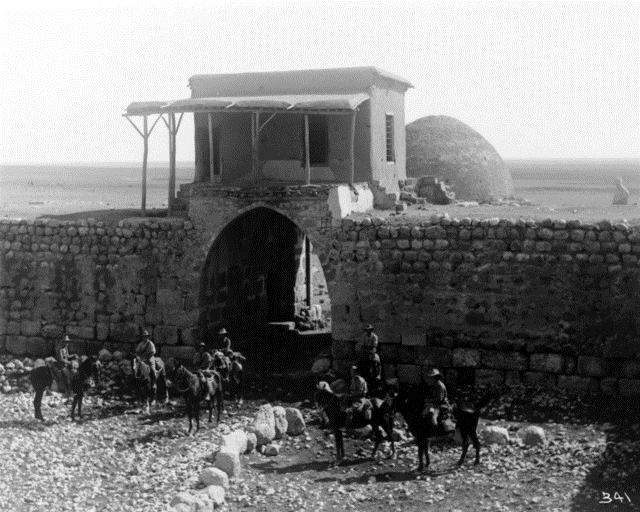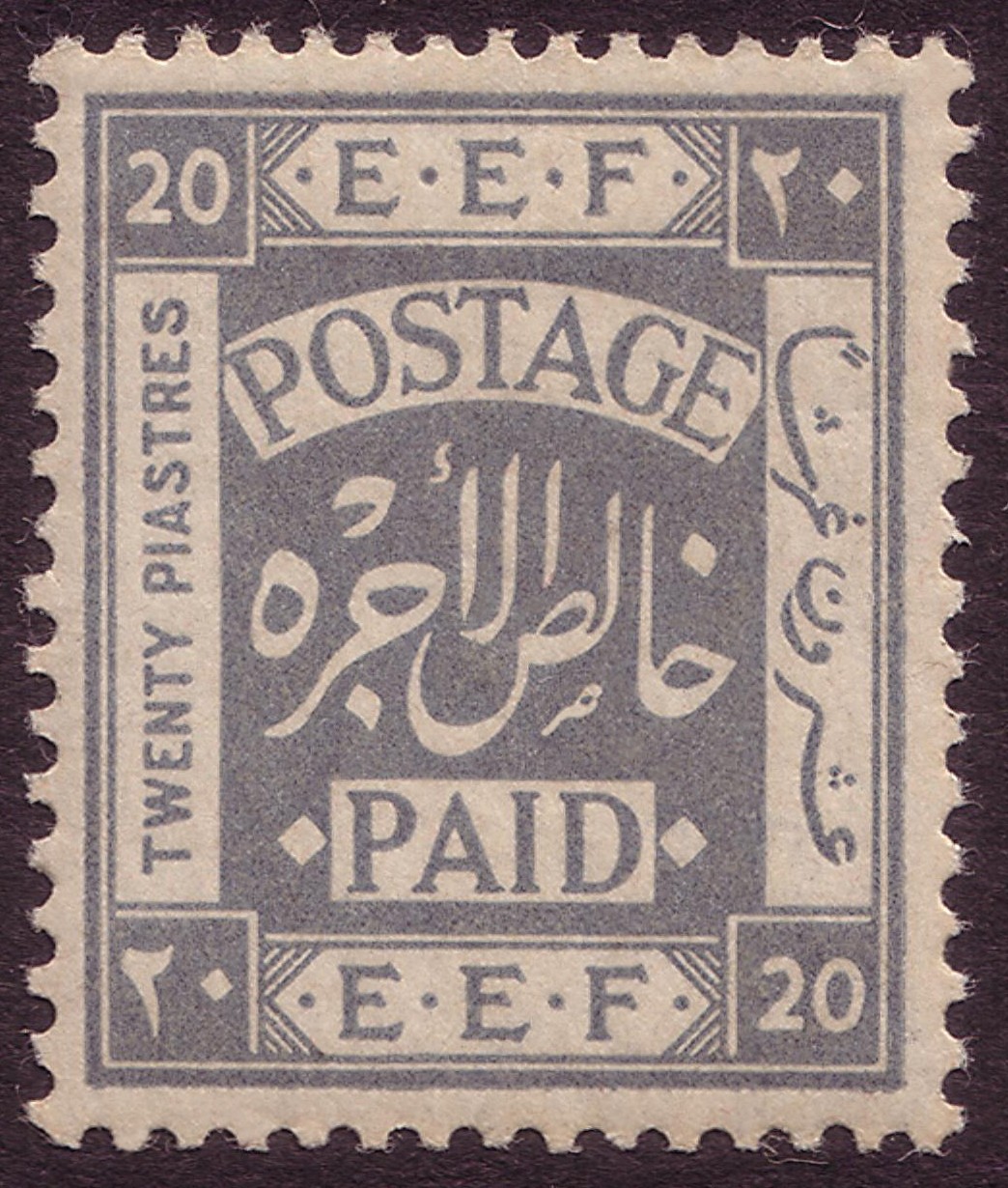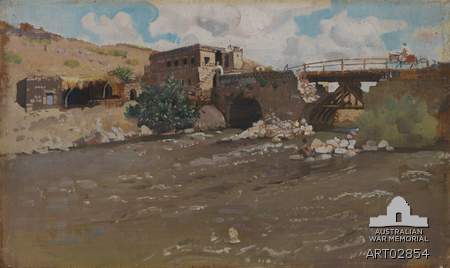|
Charge At Khan Ayash
The Charge at Khan Ayash occurred on 2 October 1918 about north of Damascus after the pursuit to, and capture of Damascus, which followed the decisive Egyptian Expeditionary Force victory at the Battle of Megiddo on 25 September during the Sinai and Palestine Campaign of World War I. After Damascus had been encircled by Desert Mounted Corps on 30 September, the 3rd Light Horse Brigade advanced through the city on 1 October to charge and capture remnants of the Ottoman Yildirim Army Group withdrawing along the road north to Rayak and Homs. Following the victories at the Battle of Sharon and Battle of Nablus during the Battle of Megiddo, and the Capture of Damascus, remnants of the Seventh and Eighth Armies retreated in columns towards Damascus from the Judean Hills. Rearguards at Samakh, at Tiberias and at Jisr Benat Yakub were captured by the Australian Mounted Division. Remnants of the Fourth Army also retreated in columns towards Damascus along the Pilgrims' Road fr ... [...More Info...] [...Related Items...] OR: [Wikipedia] [Google] [Baidu] |
Middle Eastern Theatre Of World War I
The Middle Eastern theatre of World War I saw action between 29 October 1914 and 30 October 1918. The combatants were, on one side, the Ottoman Empire (including the majority of Kurdish tribes, a relative majority of Arabs, and Caucasian ''Tatars''), with some assistance from the other Central Powers; and on the other side, the British (with the help of Jews, Greeks, Assyrians, some Kurdish tribes, and many Arabs, along with Hindu and Muslim colonial troops from India), the Russians (with the help of Armenians, Assyrians, and occasionally some Kurdish tribes) and the French (with its North African and West African Muslim colonial troops) from among the Allied Powers. There were five main campaigns: the Sinai and Palestine Campaign, the Mesopotamian Campaign, the Caucasus Campaign, the Persian Campaign, and the Gallipoli Campaign. There were also several minor campaigns: Arab Campaign, and South Arabia Campaign. Both sides used local asymmetrical forces in the region. ... [...More Info...] [...Related Items...] OR: [Wikipedia] [Google] [Baidu] |
Egyptian Expeditionary Force
The Egyptian Expeditionary Force (EEF) was a British Empire military formation, formed on 10 March 1916 under the command of General Archibald Murray from the Mediterranean Expeditionary Force and the Force in Egypt (1914–15), at the beginning of the Sinai and Palestine Campaign of the First World War. History Formed in the British protectorate of the Sultanate of Egypt, the initially small force was raised to guard the Suez Canal and Egypt. After the withdrawal from the Gallipoli Campaign the force grew into a large reserve to provide reinforcements for the Western Front (World War I), Western Front, while the Western Frontier Force fought in the Senussi Campaign from 1915 to 1917 and the Eastern Force (EF) defended the canal at the Battle of Romani in August 1916. Following the victory at Romani, part of the Eastern Force pursued the Ottoman Empire, Ottoman invading force back to Palestine (region), Palestine after the victories at the Battle of Magdhaba in December 1916 and t ... [...More Info...] [...Related Items...] OR: [Wikipedia] [Google] [Baidu] |
Charge At Irbid
The Charge at Irbid occurred on 26 September 1918 as a consequence of the victory at the Battle of Megiddo during the subsequent inland pursuit by Desert Mounted Corps to capture Damascus in the Sinai and Palestine Campaign of World War I. The charge occurred when the 2nd Lancers of the 10th Cavalry Brigade, 4th Cavalry Division, attacked the Ottoman Army garrison defending the town of Irbid. Remnants of the Ottoman Seventh and Eighth Armies were retreating in columns towards Damascus from the Judean Hills via Samakh, Jisr Benat Yakub, Kuneitra and Kaukab, followed by the Australian Mounted and the 5th Cavalry Divisions, while remnants of the Ottoman Fourth Army were retreating in columns towards Damascus along the Pilgrims' Road through Deraa. The 4th Cavalry Division at Jisr el Mejamie and Beisan was ordered to march east to intercept this remnant of the Fourth Army. At Irbid the 2nd Lancers charged Ottoman rearguard units but were strongly counter-attacked and def ... [...More Info...] [...Related Items...] OR: [Wikipedia] [Google] [Baidu] |
Battle Of Jisr Benat Yakub
The Battle of Jisr Benat Yakub was fought on 27 September 1918 at the beginning of the pursuit by the Desert Mounted Corps of the retreating remnants of the Yildirim Army Group towards Damascus during the Sinai and Palestine Campaign of World War I. After the Battle of Samakh and the Capture of Tiberias, which completed the Egyptian Expeditionary Force's decisive victory in the Battle of Sharon section of the Battle of Megiddo, the Australian Mounted Division attacked and captured a series of rearguard positions. The positions were held by German and Ottoman soldiers of the Tiberias Group at Daughters of Jacob Bridge, an important bridge across the Jordan River, and at fords at El Min and north towards Lake Huleh. Remnants of the Ottoman Seventh and Eighth Armies were retreating in columns towards Damascus from the Judean Hills via Samakh, the bridge at Jisr Benat Yakub, Kuneitra, and Kaukab, pursued by the Australian Mounted and the 5th Cavalry Divisions. At the same ... [...More Info...] [...Related Items...] OR: [Wikipedia] [Google] [Baidu] |
Capture Of Tiberias (1918)
The Capture of Tiberias took place on 25 September 1918 during the Battle of Sharon which together with the Battle of Nablus formed the set piece Battle of Megiddo fought between 19 and 25 September in the last months of the Sinai and Palestine Campaign of the First World War. During the cavalry phase of the Battle of Sharon the Desert Mounted Corps occupied the Esdraelon Plain (also known as the Jezreel Valley and the plain of Armageddon) 40–50 miles (64–80 km) behind the front line in the Judean Hills. One squadron from each of the 3rd and 4th Light Horse Brigades Australian Mounted Division attacked and captured Tiberias (on the western shore of the Sea of Galilee also known as Lake Tiberias), along with the Yildirim Army Group's Ottoman and German garrison. The Tiberias garrison formed part of a rearguard stretching to Samakh and on to Deraa which was intended to cover the retreat of three Ottoman armies. They were set up to delay the advance of the Desert Mo ... [...More Info...] [...Related Items...] OR: [Wikipedia] [Google] [Baidu] |
Battle Of Samakh (1918)
The Battle of Samakh was fought on 25 September 1918, during the Battle of Sharon which together with the Battle of Nablus formed the set piece Battle of Megiddo fought from 19 to 25 September 1918, in the last months of the Sinai and Palestine Campaign of the First World War. During the cavalry phase of the Battle of Sharon the Desert Mounted Corps commanded by the Australian Lieutenant General Harry Chauvel, captured the Esdraelon Plain (also known as the Jezreel Valley and the Plain of Armageddon) behind the front line in the Judean Hills on 20 September, when the 3rd Light Horse Brigade captured Jenin. The 4th Light Horse Brigade, Australian Mounted Division was deployed guarding supply columns, and prisoners, before being ordered to attack and capture Samakh on the shore of the Sea of Gallilee. Here the Ottoman and German garrison had been ordered by the commander of the Yildirim Army Group to fight to the last man. Samakh, in the centre of a rearguard line stret ... [...More Info...] [...Related Items...] OR: [Wikipedia] [Google] [Baidu] |
Judean Hills
The Judaean Mountains, or Judaean Hills ( he, הרי יהודה, translit=Harei Yehuda) or the Hebron Mountains ( ar, تلال الخليل, translit=Tilal al-Khalīl, links=, lit=Hebron Mountains), is a mountain range in Palestine and Israel where Jerusalem, Hebron and several other biblical cities are located. The mountains reach a height of . The Judean Mountains can be separated to a number of sub-regions, including the Mount Hebron ridge, the Jerusalem ridge and the Judean slopes. The Judaean Mountains formed the heartland of the Kingdom of Judah (930-586 BCE), where the earliest Jewish settlements emerged, and from which Jews are generally descended. Geography The Judaean mountains are part of a more extended range that runs in a north-south direction. The ridge consists of the Samarian Hills in its northern part, and of the Judaean mountains in its southern part, the two segments meeting at the latitude of Ramallah. The westward descent from the hard limestone country of ... [...More Info...] [...Related Items...] OR: [Wikipedia] [Google] [Baidu] |
Eighth Army (Ottoman Empire)
The Eighth Army of the Ottoman Empire ( Turkish: ''Sekizinci Ordu'') was one of the field armies of the Ottoman Army. It was established during World War I. World War I In June 1917, Enver Paşa activated the Yildirim Army Group (also known as Thunderbolt Army Group) commanded by the German General Erich von Falkenhayn, and reinforced it with surplus Ottoman units transferred from Galicia, Romania, and Thrace.Erickson ''Ordered to Die: A History of the Ottoman Army in the First World War'', Greenwood Press, 2001, , pp. 159, 171, ''Ottoman Army Effectiveness in World War I: a comparative study'' Routledge Press, 2007, p. 115 Following the formation of the Yildirim Army Group substantial forces were deployed to Syria and Palestine, where they continued to hold the Fourth Army defenses. Already in Palestine were the 3rd, 7th, 16th, and 54th Infantry Divisions while the 26th 27th, and 53rd Infantry Divisions arrived during the summer. The 3rd, 7th 16th, and 26th Infantry Divisio ... [...More Info...] [...Related Items...] OR: [Wikipedia] [Google] [Baidu] |
Seventh Army (Ottoman Empire)
The Ottoman Seventh Army was a large military formation of the Ottoman Empire in the late 19th and early 20th centuries. Although designated as an army, at least by 1918, it was only of corps strength. The Seventh Army was established in 1877 for service in Arabia and the Yemen. By 1908 it consisted of the 13th and 14th infantry divisions, one cavalry regiment and one artillery regiment and they were involved in combatting insurgent tribesmen in the Yemen. World War I Order of Battle, August 1917 In August 1917, the army was structured as follows:Edward J. Erickson, ''Order to Die: A History of the Ottoman Army in the First World War'', Greenwood Press, 2001, , p. 170. *Seventh Army, Syria (Mirliva Mustafa Kemal Pasha) ** III Corps *** 24th Division, 50th Division **XV Corps *** 19th Division, 20th Division ** German Asia Corps In late 1917, commanded by Fevzi Pasha, the Seventh Army was ordered to advanced across the desert in order to bring pressure to bear upon Alle ... [...More Info...] [...Related Items...] OR: [Wikipedia] [Google] [Baidu] |
Battle Of Nablus (1918)
The Battle of Nablus took place, together with the Battle of Sharon during the set piece Battle of Megiddo between 19 and 25 September 1918 in the last months of the Sinai and Palestine Campaign of the First World War. Fighting took place in the Judean Hills where the British Empire's XX Corps attacked the Ottoman Empire's Yildirim Army Group's Seventh Army defending their line in front of Nablus. This battle was also fought on the right flank in the Jordan Valley, where Chaytor's Force attacked and captured the Jordan River crossings, before attacking the Fourth Army at Es Salt and Amman capturing many thousands of prisoners and extensive territory. The Battle of Nablus began half a day after the main Battle of Sharon, which was fought on the Mediterranean section of the front line where the XXI Corps attacked the Eighth Army defending the line in front of Tulkarm and Tabsor and the Desert Mounted Corps which rode north to capture the Esdrealon Plain. Together these t ... [...More Info...] [...Related Items...] OR: [Wikipedia] [Google] [Baidu] |
Battle Of Sharon
The Battle of Sharon fought between 19 and 25 September 1918, began the set piece Battle of Megiddo half a day before the Battle of Nablus, in which large formations engaged and responded to movements by the opposition, according to pre-existing plans, in the last months of the Sinai and Palestine Campaign of World War I. The fighting took place over a wide area from the Mediterranean Sea east to the Rafat salient in the Judean Hills. Here the Egyptian Expeditionary Force (EEF) XXI Corps with the French brigade sized '' Détachement Français de Palestine et de Syrie'' attacked the Yildirim Army Group Eighth Army's XXII Corps and German Asia Corps. The Battle of Sharon extended well behind the Ottoman front lines when the Desert Mounted Corps rode through a gap in the front line across the Plain of Sharon to occupy the Esdraelon Plain. Meanwhile, during the Battle of Nablus the XX Corps attacked Nablus while Chaytor's Force held the right flank in the Jordan Valley befor ... [...More Info...] [...Related Items...] OR: [Wikipedia] [Google] [Baidu] |
Yildirim Army Group
The Yildirim Army Group or Thunderbolt Army Group of the Ottoman Empire ( Turkish: ''Yıldırım Ordular Grubu'') or Army Group F (German: ''Heeresgruppe F'') was an Army Group of the Ottoman Army during World War I. While being an Ottoman unit, it also contained the German Asia Corps. Starting in June 1917, the Yildirim Army Group's first commander in chief was the former Prussian Minister of War and Chief of Staff Erich von Falkenhayn. Von Falkenhayn was replaced by General of the Cavalry Otto Liman von Sanders on 25 February 1918. After the Armistice of Mudros on 30 October 1918, Mustafa Kemal took command until the Group's dissolution a few days later. Tactics The army group included troops who used the latest Western-Front infiltration tactics; were equipped with close-combat gear, such as Stahlhelms and stick-grenades; and were supported by artillery and machine guns. World War I Order of Battle, August 1917 In August 1917, the army group was structured as follow ... [...More Info...] [...Related Items...] OR: [Wikipedia] [Google] [Baidu] |









